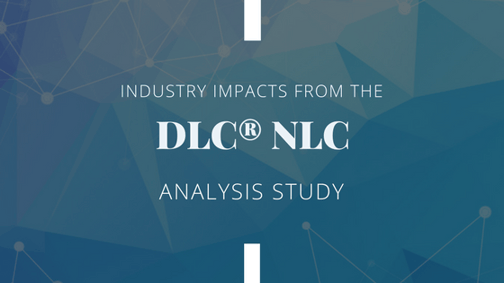 The DesignLights Consortium® (DLC®) is a non-profit organization dedicated to accelerating the widespread adoption of high-performing commercial lighting solutions. The DLC promotes high-quality, energy-efficient lighting products in collaboration with utilities and energy efficiency program Members; manufacturers; lighting designers; and federal, state, and local entities. Through these partnerships, the DLC establishes product quality specifications, facilitates thought leadership, and provides information, education, tools, and technical expertise.
The DesignLights Consortium® (DLC®) is a non-profit organization dedicated to accelerating the widespread adoption of high-performing commercial lighting solutions. The DLC promotes high-quality, energy-efficient lighting products in collaboration with utilities and energy efficiency program Members; manufacturers; lighting designers; and federal, state, and local entities. Through these partnerships, the DLC establishes product quality specifications, facilitates thought leadership, and provides information, education, tools, and technical expertise.
By 2035, more than a third of installed luminaires in commercial buildings are estimated to have network connectivity (DOE 2016).
What are Networked Lighting Controls? They are a combination of sensors, a network, a central processor, and a user interface. It’s an intelligent network that integrates communication between various system inputs and outputs related to lighting with the use of one central processor.
The DLC analysis is important because - even with the limited availability of the data they had to work with - utilities are going to use this study to lay the groundwork for the design of networked lighting controls incentives. While some utilities have been experimenting with incentive design in this area, the study gives them a firmer foundation to build upon, and use as justification to their regulatory overseers. (Download the 63 page Analysis.)
The greatest impact on the controls industry, I believe, is going to come from the influence this study has on the program designers at the utilities, not only for design the financial side of the incentives, but the eligibility and compliance-side as well.
Financially, the study highlights the fact that energy savings is very site specific with NLCs averaging about 47% savings across all buildings, but extremely variable by building type and from building to building in the same use or type. A school with many windows versus a school without many windows will react very differently to daylighting/dimming controls. The degree of customization of the systems can vary greatly as well. An incentive program designer needs to balance accuracy of energy savings versus the effort to achieve that accuracy. The more customized the incentive calculation needs to be, the more data and analysis required to verify and pay the incentive.
Which incentive calculation scheme a program designer picks (kWh, sq ft, prescriptive, etc.) will result in an uneven benefit amongst building types. A kWh-based program should provide the greatest incentive to those building types who are best suited to NLC designs, but could then narrow the participation in the program to those building types. Square-footage based programs can even the playing field amongst building types, but results in less lucrative incentives for those building types with greatest energy savings potential.
From a compliance/eligibility perspective, the DLC NLC QPL has already identified required attributes for equipment, but the utilities requirements will more than likely extend beyond equipment capabilities. The biggest other area will be around data and reporting. The study highlights the difficulty in accessing data for analysis, and given the level of building variability and system customization, data will more than likely become a compliance and eligibility requirement over and above QPL system features.
Regardless of these issues, the controls industry should be prepared for the following impacts:
- Incentive design will drive economics and ROI for NLC projects and should be taken into account for goto-market planning.
- Data availability. Challenges in access to data and lack of standardization of data is the underlying weakness of this study. The utilities need access to data in order to better design the incentive schemes as well as to pay out the incentives.
- NLC data standards. NLC manufacturers should consider voluntarily collaborating on how their systems report usage and savings. Otherwise utilities will do it for them, like they have before. We could definitely envision a scenario where a utility declares a NLC system non-rebateable due to lack of compliance with a data standard.
While some incentives currently exist for NLC systems, the study should increase the number of incentives available. However, the view of the utility program planners is critical here since they will determine when this can go into effect. It may affect the program planning for 2018, but the timing of the release and variability in the results may delay implementation, but not for long!
The release of the study should result in the appearance of more incentive schemes for NLCs. As we, Encentiv Energy, continue to monitor all utility programs, we expect to be able to have this information available in Encentivizer™ as soon as utility programs release their updates for NLC incentives. We expect 2018 to be a big year for controls and the DLC® analysis confirms this.
Encentivizer will be your on-the-spot, on-time resource for networked lighting controls.
Learn more today and be prepared for the changes in the industry!
.png?width=500&name=2019%20e%20news%20spotlight%20logo%20(1).png)




